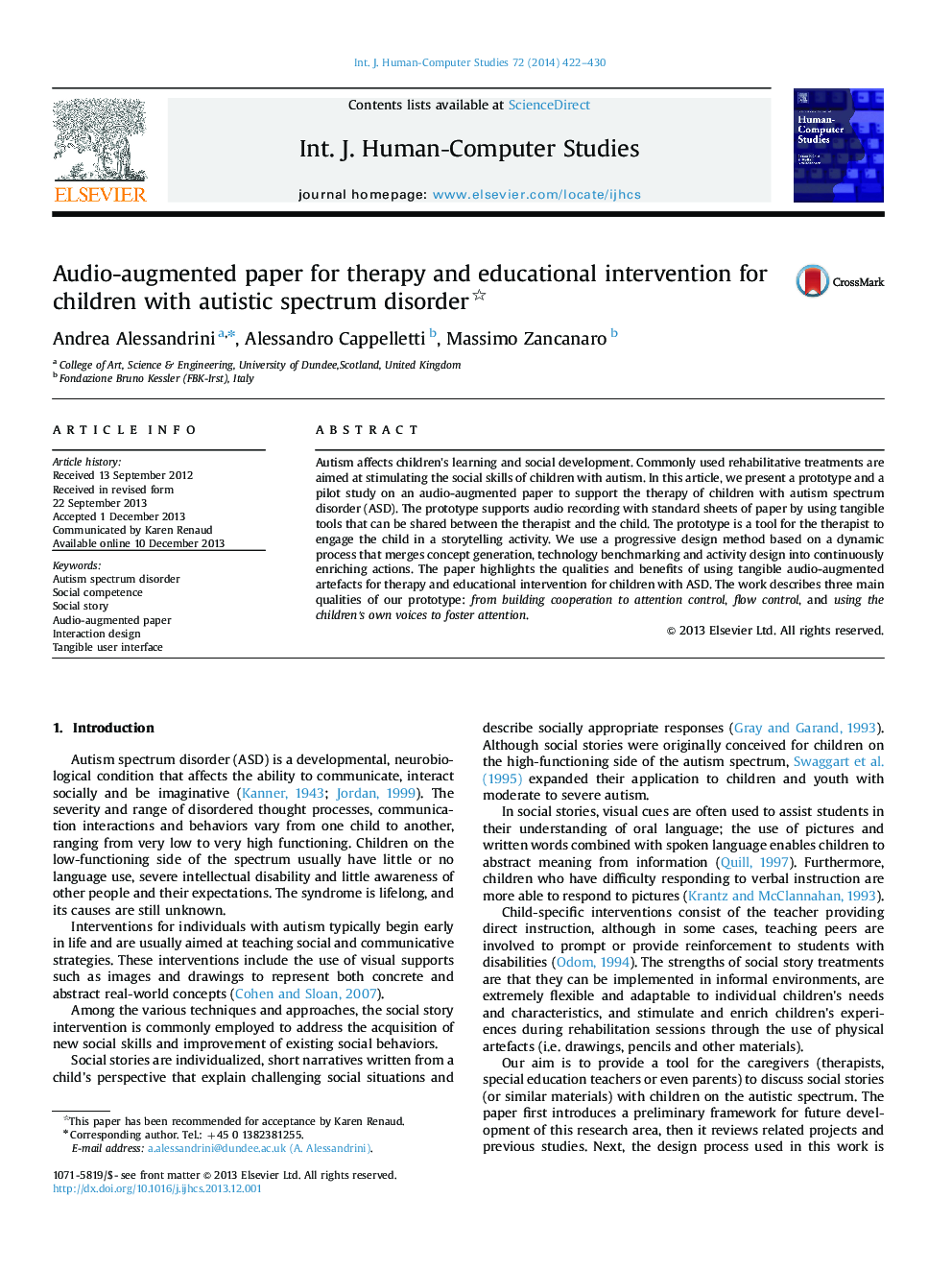| Article ID | Journal | Published Year | Pages | File Type |
|---|---|---|---|---|
| 401875 | International Journal of Human-Computer Studies | 2014 | 9 Pages |
•Physical tokens are artifacts which sustain cooperation between the children and therapists.•Therapists anchor children's attention through physical tokens.•Therapists controlled children's attention through physical tokens.•The environment provides to the therapists the control of the “flow” of the therapeutic activity.•The environment provides a good mean to stimulate fun and consequently to help children's attention on listening tasks.
Autism affects children׳s learning and social development. Commonly used rehabilitative treatments are aimed at stimulating the social skills of children with autism. In this article, we present a prototype and a pilot study on an audio-augmented paper to support the therapy of children with autism spectrum disorder (ASD). The prototype supports audio recording with standard sheets of paper by using tangible tools that can be shared between the therapist and the child. The prototype is a tool for the therapist to engage the child in a storytelling activity. We use a progressive design method based on a dynamic process that merges concept generation, technology benchmarking and activity design into continuously enriching actions. The paper highlights the qualities and benefits of using tangible audio-augmented artefacts for therapy and educational intervention for children with ASD. The work describes three main qualities of our prototype: from building cooperation to attention control, flow control, and using the children׳s own voices to foster attention.
